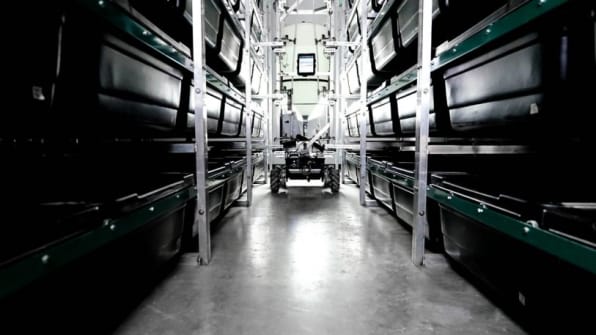
21 Aug This Giant Automated Cricket Farm Is Designed To Make Bugs A Mainstream Source Of Protein
Inside a new building in an industrial neighborhood near the airport in Austin, a robot is feeding millions of crickets, 24 hours a day. The facility–a 25,000-square-foot R&D center that opened this month for the startup Aspire–uses technology that the company plans to soon duplicate in a farm 10 times as large. It’s a scale that the startup thinks is necessary to begin to make cricket food mainstream in the United States.
Eating bugs–or at least products made from bugs–has been growing in popularity. For a few years, it’s been possible to buy cricket snacks such as protein bars made with cricket flour or cricket chips (like Chirps) at some grocery stores or online. But for insect food to fulfill its sustainable promise of supplying protein without the massive carbon and land footprint of beef, it will have to be much more widely available, and more affordable. Aspire believes its farms can make that possible.
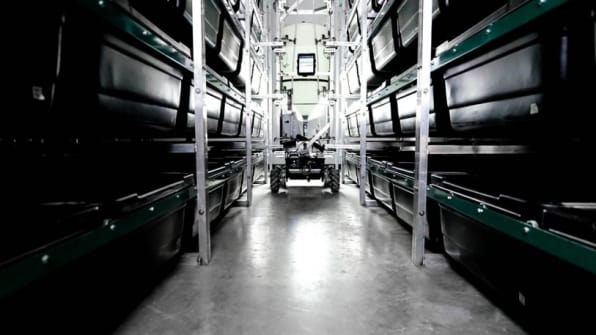
Right now, “insect protein products sold in North America are a premium product,” says Mohammed Ashour, CEO of Aspire, which launched in 2013 after the founders–students at the time–won the $1 million Hult Prize for their business plan for edible insects. “It’s very expensive. A pound of cricket protein powder right now at wholesale sells for approximately $20. That’s not because of an artificial, significantly inflated gross margin–that’s simply because the cost of production is very high.” A pound of cricket powder includes between 4,200 and 4,800 crickets. While non-cricket protein powders vary in price, a pound of a cheap powder can wholesale for as little as $10.
Aspire’s team spent time studying how crickets respond biologically to intensive production, and then began focusing on cost-effectiveness. The company’s original facility required staff to walk around a vertical farm multiple times a day, feeding bins full of crickets on multiple racks. The new system uses a robotic module that travels around the farm, depositing the ideal amount of food; sensors use machine learning and AI to monitor how the insects eat and when they need more.
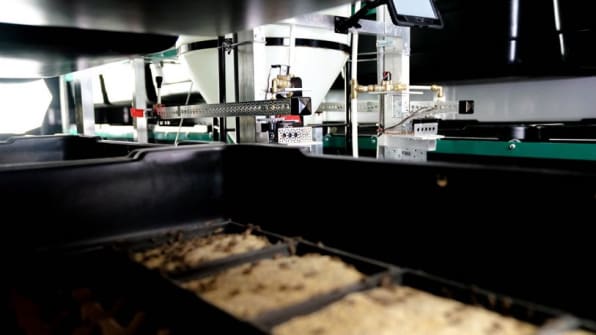
In the past, farmers worked standard business hours; crickets are nocturnal. “You end up dumping a very significant amount of food at the end of the day and hope that it will last overnight,” says Ashour. “That may work, but it’s definitely a very inefficient and not an appropriate way to deliver food in a cricket-centric way.” Using analytics, the company was also able to modify the cricket’s diet to produce a higher-quality end product with more protein and fewer carbs.
The crickets mate and lay eggs in a dedicated breeding space, and then the hatched eggs are moved to a bin where they grow until harvest. Each bin is monitored with the company’s own sensor technology, and each aspect of the cricket’s life, from hatching to harvest, is automated as much as possible. The company has seen a tenfold increase in production with the system. Because manual labor at the farm previously accounted for 75% of the cost of goods, the system can make cricket-based food cheaper to buy.
Aspire sells cricket flour to other manufacturers in the burgeoning insect food space, and also sells its own line of products, called Aketta, to consumers. Both consumer and retail demand have grown more quickly than the company initially expected. In March 2017, it started selling bags of whole, dry-roasted crickets, partly to test demand.

“We wanted to gauge consumer readiness for consuming insects in this most confrontational fashion. Our hypothesis . . . was that we’re still a long way to go, and the needle won’t have moved very dramatically from two years ago when our data showed that something like 70% of Americans aren’t ready,” says Ashour. “Almost the opposite began to happen.”
When the company offered the whole crickets at events, alongside a cricket granola and other products where the insect ingredient wasn’t visible, consumers were most interested in eating the bugs. High-end restaurants have started partnering with the company to offer cricket dishes on the menu. The Seattle Mariners served toasted crickets at its concession stand at a recent game.
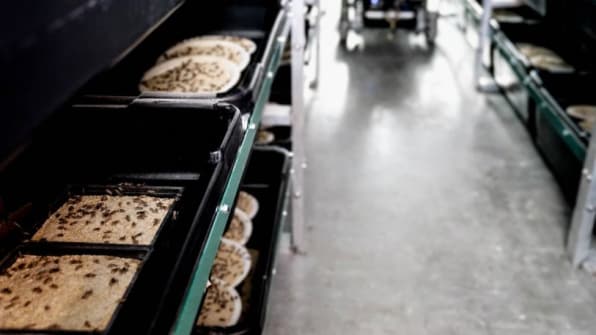
“The inflection point happened this year,” says John Chambers, executive director of Cisco, who invested in Aspire after meeting Ashour at the Clinton Global Initiative. “It moved from being something unique. I love to challenge various groups [to eat the crickets] as I travel around the world, and I have not had a single person pass on trying the crickets when we did it.”
Other companies are also using technology to farm insects. Tiny Farms, a Bay Area-based startup, also uses data analysis and automation to rear crickets, and opened a pilot farm in San Leandro, California, in 2016. But while Tiny Farms creates modules that can be used on a small scale–arguing that it makes sense to raise insects in a distributed way–Aspire believes that larger farms are needed.
By mid-2018, Aspire plans to build out a 50,000-square-foot facility, incrementally adding more space until it reaches 250,000 square feet by the end of 2019. The current 25,000-square-foot farm can raise more than 22 million crickets in a month; that total output is spoken for over the next two years with current customers, and the company has additional demand that it can’t yet keep up with. Large food manufacturers are interested, and Aspire plans to launch a product with one manufacturer soon. Ashour says that all of the major companies have run R&D on insect protein and are considering investing (or have already invested) in insect protein startups. PepsiCo, for example, recently posted a request on an innovation website asking for unique insect protein. “Bug-related stuff is big,” PepsiCo CEO Indra Nooyi said at a conference in 2016.
Ashour, like others in the insect food industry, argues that insects like crickets may follow a similar path to foods like lobster–which was originally seen as a food for the poor–or sushi, which was initially received in the U.S. with some reluctance. Starting with cricket-based snack foods, he believes, can eventually lead consumers to become comfortable with crickets on the center of their plates.
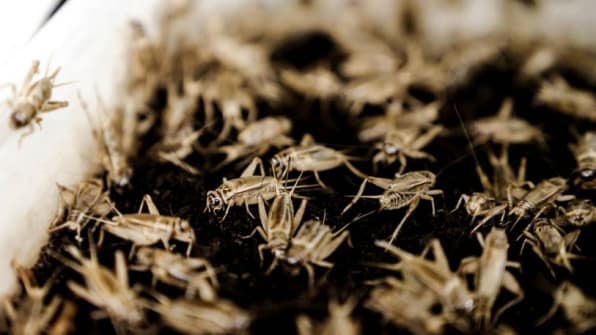
In other parts of the world, eating insects is already common. Aspire also has a farm in Ghana to help address food security issues there. “That’s a problem that disproportionately impacts the poor . . . having access to safe, nutritious, and affordable food,” says Ashour. “That’s why we have a farm in Ghana, that’s why we’re there, because in Ghana, demand for insect protein is already high. There, it’s strictly an issue of supply and affordability.”
In Ghana, labor is cheap enough that the company doesn’t plan to implement its full technology platform; the crickets are already competitive with other protein sources at current prices. As the company expands throughout the developing world, however, it plans to use sensor technology to monitor the insects, and a base system to make the farms easier to implement. “The advantage of modularizing the technology is that you can more or less plug and play a farm anywhere in the world and not have any concerns about quality control,” Ashour says. The company plans to expand in Africa, Asia, and Latin America over the next five years.
Source: Fast Company




Sorry, the comment form is closed at this time.